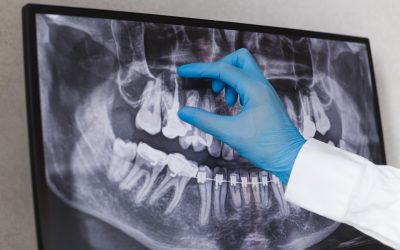Endodontists have been called the superhero of saving teeth by the American Association of Endodontists. This dental specialty focuses on the treatment of dental pulp and surrounding tissues.
This field of dentistry is particularly important for addressing tooth pain, disease, and infection. With their advanced training, endodontists are equipped to diagnose and treat complex causes of tooth pain by performing a root canal, a standard procedure performed by endodontists.
Endodontic treatments aim to maintain and save natural teeth, an essential aspect of maintaining a healthy smile. By understanding the basics of endodontics and the importance of endodontists, individuals can better address tooth pain and other related oral health issues, ultimately preserving their natural teeth for a lifetime.
What is Endodontics?
Endodontics is a branch of dentistry that exclusively treats the soft tissue in the tooth's center called the dental pulp. This dental pulp contains the nerve, blood and lymphatic vessels, and connective tissue. Endodontists have undergone additional training in diagnosing, preventing, and treating dental pulp injuries and diseases and related periradicular conditions.
The Science Behind Endodontics
Endodontists possess the necessary knowledge and expertise to understand the complexities of dental pulp and root canal systems. Thus, they can diagnose and treat various dental problems related to the dental pulp. Dental pulp can become inflamed or infected due to factors such as tooth decay, injury, or gum disease. Endodontists can identify the specific causes of tooth pain or inflammation and determine the most appropriate course of treatment.
Endodontic Procedures
One of the most common endodontic procedures is a root canal, that consists of the removal of the infected or damaged pulp from the tooth. This procedure can save a tooth from extraction, restore its functionality, and relieve any associated pain.
Other endodontic treatments may include:
-
- Pulpotomy: Partial removal of the pulp, often performed on children with primary teeth affected by extensive decay or injury
- Apicoectomy: Surgical removal of the root tip and inflamed tissue around it, usually performed after a failed root canal treatment
- Regenerative endodontics: Advanced procedures aimed at preserving or regenerating the tooth pulp, blood vessels, and nerves; this can include stem cell therapy, growth factor application, or scaffold implantation
Endodontic treatments also involve the use of advanced tools and technologies, such as:
-
- Microscopes: Enhancing the visualization and precision during treatment
- Digital radiography: Providing accurate, high-resolution images for diagnoses and treatment planning
- Ultrasonics: Allowing for non-invasive or minimally invasive procedures as well as precise debridement of infected tissue
Endodontists vs. General Dentists
Even though all endodontists are dentists, only a small percentage of dentists are considered endodontists.
Training and Education
Endodontists are dental specialists who have completed dental school and then pursued advanced education in the field of endodontics. They typically undergo two to three years of additional training after dental school, focusing on the diagnosis and treatment of dental pain, issues affecting tooth pulp, and root canal procedures. This advanced education allows them to become experts in their field and be eligible for certification by the American Board of Endodontics.
On the other hand, general dentists are professionals who have completed dental school and are trained to provide a broad range of dental services. While they receive some level of training in endodontic diagnosis and therapy, it is less specialized compared to the training an endodontist receives.
Scope of Practice
The scope of practice for endodontists is narrower than that of general dentists, as they specialize in diagnosing and treating issues specifically related to the tooth's root and pulp. They perform an average of 25 root canal treatments weekly, whereas general dentists typically perform around two.
While both endodontists and general dentists can address tooth pain and perform root canal procedures, endodontists are often more experienced due to their focused training and specialization. This expertise can lead to smoother, more comfortable treatment processes. In contrast, general dentists focus on a broader range of oral health issues, including placing fillings, cleaning teeth, and diagnosing various dental conditions.
Generally, dentists and endodontists often work together as a team to provide comprehensive dental care. A general dentist may refer a patient to an endodontist for complex tooth problems while still being involved in the patient's overall dental care plan.
Conditions Treated in Endodontics
Root Canal Infections
With the primary focus of endodontics involving the dental pulp, one of the most common conditions to treat is root canal infections. These infections can occur due to untreated tooth decay, causing inflammation and damage to the tooth's root tissues. Root canal treatment aims to remove the inflamed or infected pulp, clean and shape the root canal, and then fill and seal the space to prevent further infection or inflammation.
Dental Trauma and Injuries
Endodontists also specialize in treating dental trauma and injuries. These may involve a tooth that has been knocked out, a cracked or fractured tooth, or a dislodged tooth. In such cases, endodontists can perform various procedures based on the extent of the injury and the individual patient's needs. For example, they may:
-
- Stabilize a tooth with a splint
- Replant a tooth that has been knocked out
- Perform root canal treatment to address any damaged nerves or blood vessels
Endodontists may utilize X-rays to better understand the extent of the injury and develop an appropriate treatment plan.
Complicated Dental Anatomy
In some cases, patients may have complex dental anatomy that complicates the treatment of various oral health issues. Endodontists receive specialized training in identifying and addressing such anatomical variations, which may include additional or unusually shaped canals, narrow root canals, or calcified canals. Their expertise allows them to diagnose and treat these conditions effectively, contributing to improved oral health and reduced tooth pain for patients.
Endodontic Procedure Steps
Diagnosis
The first step in endodontics is a proper diagnosis. This process typically involves an endodontist examining the patient's oral health, taking X-rays, and reviewing the patient's symptoms and medical history. Based on this assessment, a treatment plan is devised to address the patient's specific needs.

Local Anesthesia
Before beginning the endodontic treatment, the patient's affected tooth and surrounding gums need to be numbed with a local anesthetic. This numbing ensures that the patient is comfortable and pain-free during the procedure.
Treatment
Endodontic treatment begins with the dentist isolating the affected tooth using a rubber dam. This dam is a protective sheet that separates the tooth from the rest of the mouth, preventing bacteria and saliva from interfering with the procedure.
Next, the endodontist opens the crown (top) of the tooth and removes the pulp, which is the soft tissue containing blood vessels, nerves, and connective tissue. Using small instruments, they will clean, reshape, and enlarge the root canal — the pathway from the pulp to the jawbone.
Once the root canal is thoroughly cleaned and disinfected, it is filled with a biocompatible material called gutta-percha to seal the canal and prevent reinfection. The endodontist may also apply medication to the canal if necessary to reduce infection risk.
After the root canal is sealed, a temporary filling is placed on the tooth to protect it until a permanent crown can be placed. The permanent crown will restore the tooth's functionality and appearance and is typically placed by a general dentist within a few weeks following the endodontic treatment.
Aftercare
After the endodontic procedure, the patient must maintain good oral health habits with daily brushing and flossing, and attending regular dental check-ups. This oral health maintenance will help ensure the long-term success of the endodontic treatment and keep the patient's teeth healthy and strong.
Surgical Endodontic Procedures
Surgical endodontic procedures are used to treat conditions that cannot be resolved through non-surgical methods, such as root canals. These surgeries play a vital role in resolving complex dental issues and preserving patients' oral health. This section will discuss two common surgical endodontic procedures: Apicoectomy and Endodontic Retreatment.
Apicoectomy
An apicoectomy is a surgical procedure, also called root end surgery, involving the removal of a tooth's root tip or tooth's apex. This procedure is typically performed when non-surgical root canal treatment has failed or when it is impossible to locate fractures or hidden canals with standard methods.
During an apicoectomy, the endodontist:
-
- Makes a little incision in the gum tissue to expose the underlying bone and root
- Removes the affected root tip and any damaged tissue
- Places a small filling at the end of the remaining root to seal the canal
- Sutures the gum tissue back into place to promote healing
The patient may experience some pain and swelling following the procedure, which is usually managed with over-the-counter medications and proper oral care.
Endodontic Retreatment
Endodontic retreatment occurs when a tooth that has previously undergone a root canal procedure experiences problems or fails to heal properly. There are several reasons this could occur, such as:
-
- Undetected or untreated canals
- Misaligned or leaking crowns
- New infections or decay
During endodontic retreatment, the endodontist will:
-
- Remove the existing crown or restoration
- Remove the previous root canal filling material
- Thoroughly clean and examine the canals
- Reshape and fill the canals
- Place a new crown or restoration on the tooth
The objective of endodontic retreatment is to save the tooth and promote healing. However, in some cases, tooth extraction may be necessary if there's extensive damage to the tooth structure or if the endodontist concludes that further treatment would not yield successful results.
Final Thoughts on What is Endodontics
Endodontists are dental specialists who play a crucial role in saving teeth. They have advanced training that focuses on diagnosing and treating tooth pain and problems related to a tooth's dental pulp or center.
Endodontists employ specialized techniques and superior technologies to help stabilize and potentially save the affected teeth, preventing tooth loss and preserving the patient's natural smile. Some standard procedures they perform include root canal treatment, endodontic retreatment, and endodontic surgery.
In summary, endodontists are valuable dental practitioners with specialized knowledge and expertise in preserving teeth. They play a significant role in treating traumatic dental injuries and employing advanced techniques and technologies to ensure patients retain their smiles for years to come.




